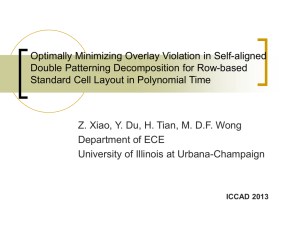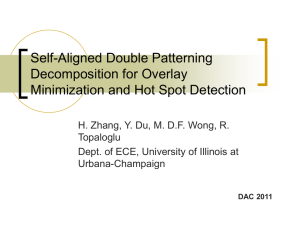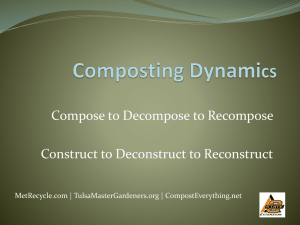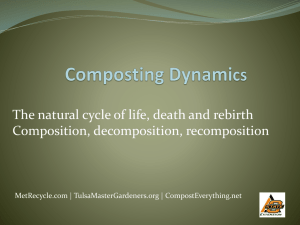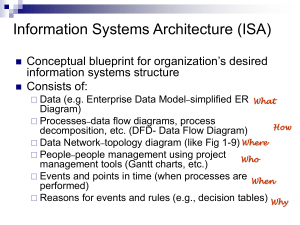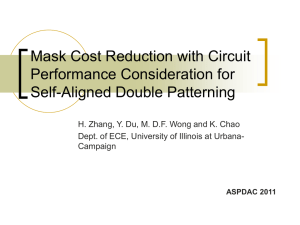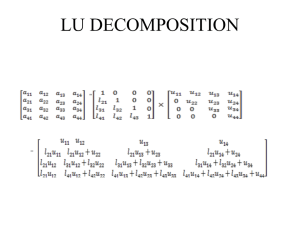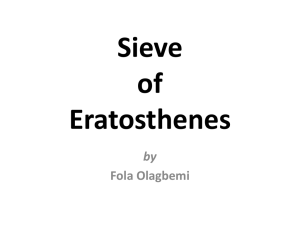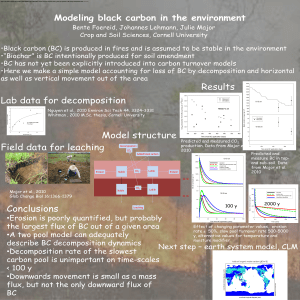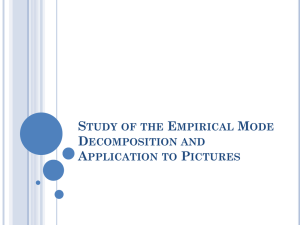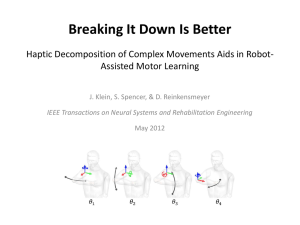PPT
advertisement
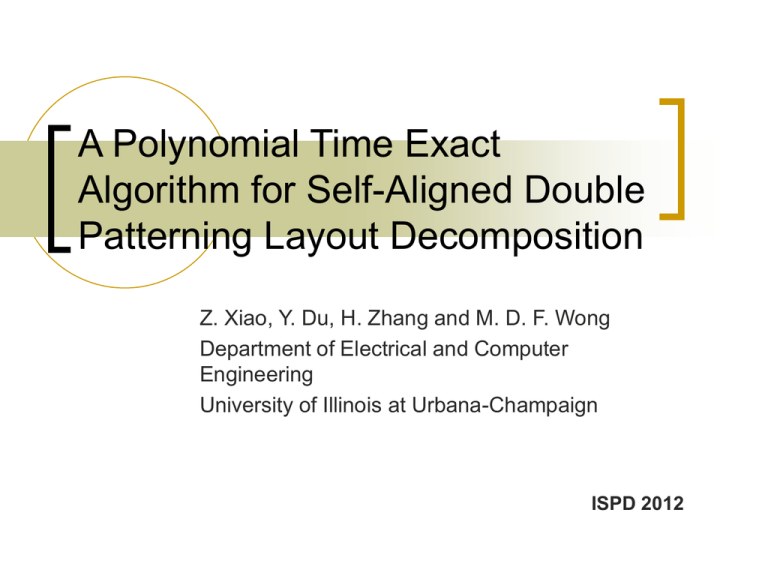
A Polynomial Time Exact Algorithm for Self-Aligned Double Patterning Layout Decomposition Z. Xiao, Y. Du, H. Zhang and M. D. F. Wong Department of Electrical and Computer Engineering University of Illinois at Urbana-Champaign ISPD 2012 Outline Introduction Preliminaries A polynomial-time exact algorithm for SADP decomposition Experimental results Conclusion Introduction Double patterning lithography (DPL) has become more and more important for the current sub-32nm nodes. LELE (litho-etch-litho-etch) splits the intended patterns into two exposures. It suffers from the inevitable overlay problem during the process. The features printed between two masks may be misaligned. Introduction SADP (Self-aligned double patterning) is a promising alternative double patterning lithography that can significantly avoid overlay. As a DPL, it also contains two mask steps, namely core mask and trim mask. The problem of generating the core and trim mask from a 2D designed layout is called SADP decomposition. Introduction Preliminaries Overlay in SADP Process Overlay control in SADP is achieved by providing sidewall protection to feature boundaries. The sidewall must have thickness ws >= 2w0 to fully tolerate the overlay. Preliminaries Process Rules The width of a core pattern is at least wc. The width of a trim pattern is at least wt. The distance between core patterns is at least dc. The distance between trim patterns is at least dt. The width of sidewall is ws. The trim overlay is w0. wc and wt are usually the same, we refer them as wmin. dc and dt are usually the same, we refer them as dmin. ws >= 2w0 Auxiliary Cores Auxiliary Cores An auxiliary core is a core pattern that is placed outside of a feature to generate parts of sidewall required for the feature. We call a core pattern as a main core when it is placed at the same location as a feature and generate the sidewall directly. Sometimes we cannot use main cores due to the process rules. An alternative way is to use auxiliary cores. Auxiliary Cores Alternative layout decompositions Auxiliary Cores A graph formulation for SADP decomposition A graph formulation for SADP decomposition dmin = wmin = 40nm and ws = 30nm. The distance between the two features is 35nm. The sidewall generated by the left feature cannot touch the right feature since ws = 30nm. The right feature will be widened 5nm. A graph formulation for SADP decomposition Given two features, to decompose the layout, we have the following cases depending on the value of d: If d >= 2ws + wmin, the features are far away from each other. Either method can produce the features. If wmin <= d < 2ws + wmin, we cannot use aux-method for both features. But we can still use core-method for each feature. If ws < d < wmin, this layout cannot be decomposed. If d = ws, we can use core-method for one feature while use aux-method for another. If d < ws, this layout cannot be decomposed. A graph formulation for SADP decomposition Given a layout that consists of a set of target features, we construct Gs = (V, E) as follows: For each feature in the layout, include a vertex in V. If the distance d between two features u and v is exactly ws, insert an edge e = (u, v) in E. If d < ws or ws < d < wmin, the layout is not decomposable. A polynomial-time exact algorithm for SADP decomposition A polynomial-time exact algorithm for SADP decomposition The ring of core may interact with other cores and features. A polynomial-time exact algorithm for SADP decomposition Two two-coloring solutions for each component. A polynomial-time exact algorithm for SADP decomposition Combine the decompositions and form a complete final decomposition. Two decompositions from two different components are compatible if they can be merged as a consistent overlay-free decomposition. Otherwise, they are incompatible. Include exactly one decomposition from each component to form a final decomposition and all decompositions selected are mutually compatible. A polynomial-time exact algorithm for SADP decomposition Given decompositions of all components of Gs, the final decomposition can be found in polynomial-time. Assume that there are k components in Gs, each with at most two decompositions. Construct a boolean formula f. For component i, denote its two decompositions as x i and xi If xi does not exist, include it in f as a disjunction. Disjunct a clause (xi Λ xj) in f if xi is incompatible with xj where i≠j. A polynomial-time exact algorithm for SADP decomposition Let g = f . g is in 2-conjunctive normal form. g is satisfiable if and only if there exists a final decomposition we want. 2SAT problem can be solved in polynomial time. Experimental results Experimental results Conclusion This paper proposed a graph formulation that correctly models the SADP problem. They proposed the first polynomial-time exact algorithm that solves the SADP problem.
